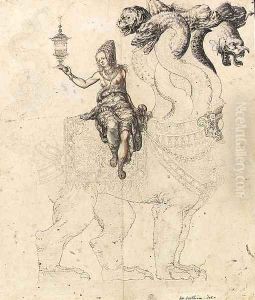School Of Berne Paintings
The School of Berne refers not to a single artist, but rather to a group of anonymous painters and artisans active in the city of Bern and its surrounding regions in Switzerland during the late Gothic period, which spanned the 15th century and extended into the early 16th century. This 'school' is characterized by its distinctive artistic style and contributions to painting, sculpture, and other decorative arts of the time. While the term 'School' is used, it is important to note that it does not imply a formal institution but rather a regional stylistic trend or movement.
The artists of the School of Berne were influenced by both local Swiss traditions and the broader currents of European art, particularly the innovations coming from the Low Countries and Italy. Their work is often noted for its detailed realism, vibrant colors, and intricate ornamentation. The School of Berne flourished during a time when Bern was growing in political and economic power, and much of their work was commissioned by the city's patrician class and the church.
Because the artists from the School of Berne often remained anonymous, specific biographies of individual painters or sculptors are scarce. Instead, art historians study the group based on the collective characteristics of their work and the documented commissions that remain. Key works attributed to the School of Berne include altarpieces, frescoes, and panel paintings, many of which can still be seen in situ in churches or are preserved in museums.
The School of Berne's significance lies in its contribution to the cultural identity of the region and its role in the development of Swiss art. It served as an important bridge between the Gothic and Renaissance periods in Switzerland, reflecting the transition in artistic styles and the increasing importance of humanism in art. The legacy of the School of Berne continued to influence Swiss artists even after its decline, as the Renaissance style took firmer root in the region.
